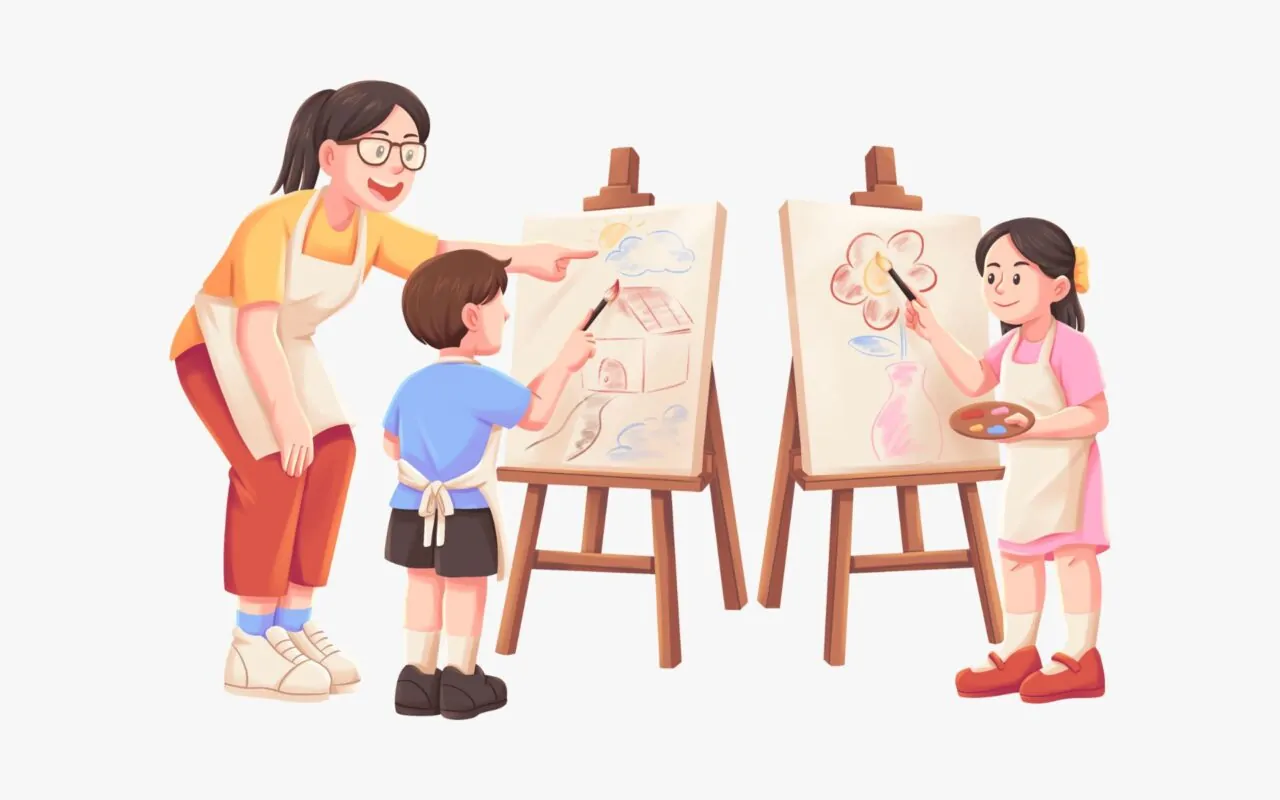If you’ve ever handed a four-year-old a crayon, you’ll know exactly how unpredictable it can get. One moment they’re drawing a circle that looks suspiciously like a potato, the next they’re scribbling across the wall with the confidence of Picasso. At this age, art isn’t about creating a perfect picture. it’s about exploring, experimenting, and letting tiny hands figure out how to express big ideas.
That’s why the right children’s art classes Singapore style curriculum matters so much for the 4–6 age group. Kids in this stage are curious sponges. They’re eager to try, quick to laugh at mistakes, and full of questions like “why is the sky blue?” or “can I make the sun purple?” A strong art program doesn’t just teach them how to draw, it nurtures their imagination while building important skills they’ll carry into school and beyond.
Why the early years are so powerful
A lot of parents think “serious” learning starts in Primary 1. But those early years are where the foundation is built. Between ages four and six, children are developing fine motor skills, attention span, and social awareness at lightning speed.
When they join programs like the Tender Minds Program at Strokearts, they’re not only doodling, they’re learning how to hold tools properly, follow simple instructions, and even work alongside their peers without grabbing each other’s crayons every five seconds (a skill in itself!). These small things might not sound like much, but they prepare kids for structured classroom settings later on.
What a good curriculum should include
So, what does an art curriculum for 4–6-year-olds actually look like? It’s not hours of silent drawing, that’s for sure. At this age, kids learn best when art feels like play. A well-designed class usually mixes the following:
- Exploration of materials – crayons, paints, markers, clay, even collage. Letting kids touch, mix, and sometimes make a mess is part of the process.
- Basic shapes and forms – circles, triangles, lines. They sound simple, but these are the building blocks for everything else.
- Color play – experimenting with primary colors, mixing to see what happens, using bright shades to match their energy.
- Storytelling through art – encouraging children to explain what they’ve drawn (even if it’s a blob with ten legs). This builds both creativity and communication.
- Motor skill activities – cutting, pasting, tracing. These strengthen hands for writing later on.
The key is balance. Too much structure and kids lose interest; too little and they just end up scribbling aimlessly. A thoughtful program guides them but leaves plenty of space for freedom.
Social learning in disguise
One of the underrated benefits of children’s art classes Singapore is how much kids learn about sharing and teamwork. In a room full of eager little artists, they naturally peek at each other’s work, borrow ideas, and sometimes argue over the red paint. But within those interactions are lessons in patience, empathy, and respect.
In programs like Tender Minds, teachers step in gently helping kids see that there’s no “right” way to draw, and that everyone’s work is worth appreciating. Over time, the shy ones come out of their shells, and the outspoken ones learn to listen too.
The role of imagination at this age
Ask a five-year-old to draw a house, and you might get something with no doors, three chimneys, and a rainbow on the roof. And that’s exactly the point. At this age, kids aren’t bound by logic the way adults are. Their drawings reflect how they see the world, colorful, flexible, sometimes wild.
A strong curriculum doesn’t correct these “mistakes.” It celebrates them. By allowing children to imagine freely, we’re actually strengthening their problem-solving skills and creative confidence qualities that will help them in academics later on.
Why parents love programs like Tender Minds
Parents often join for one reason and stay for another. Many sign their kids up thinking, “It’ll be fun, maybe they’ll learn to draw nicely.” But after a few weeks, they notice something else:
- Their child sits longer during homework.
- They’re more willing to try new things.
- They come home excited to show what they made, even if it’s just colorful scribbles.
The Tender Minds Program is designed exactly for this age not to push children into advanced techniques too early, but to give them confidence and curiosity that naturally flows into other areas of life.
Wrapping it up
An art curriculum for 4–6-year-olds isn’t about producing mini-Monets. It’s about letting kids explore, guiding them gently, and watching as their confidence, focus, and social skills start to bloom.
Whether it’s through the Tender Minds Program or another structured option, enrolling in children’s art classes Singapore style gives your child a head start that’s far bigger than a nice drawing. It’s the kind of learning that doesn’t always show up on report cards but shows up in how your child thinks, feels, and interacts with the world.


